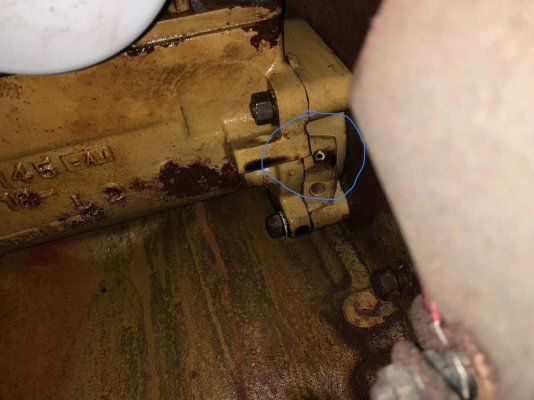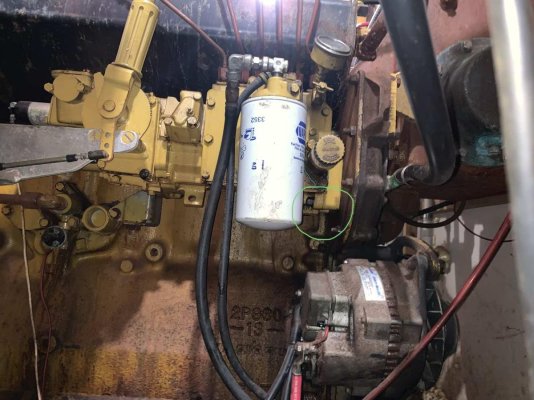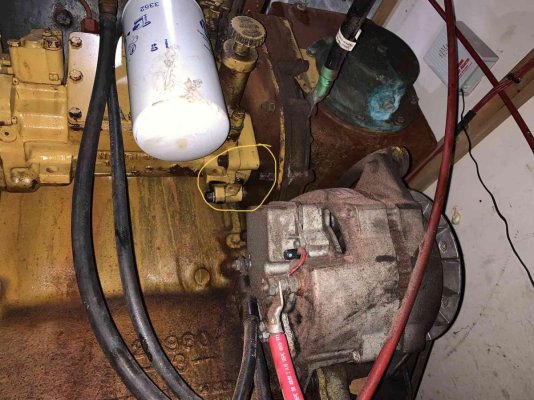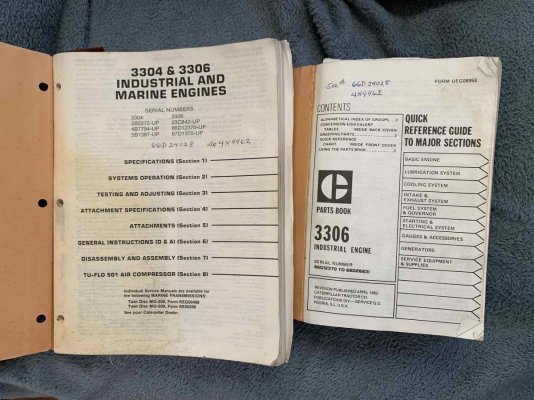LeoKa
Guru
- Joined
- Apr 15, 2017
- Messages
- 1,197
- Location
- USA
- Vessel Name
- Ironsides
- Vessel Make
- 54' Bruce Roberts steel sailboat hull, coastal LRC, 220HP CAT 3306.
I need help to identify a part/bolt on the fuel system.
Recently, I’ve discovered fuel drops under the governor. It looked like the fuel was coming out of a nipple/bleeder? I figured, if I tighten it up, the bleeding will stop. Unfortunately, the nipple broke in half, instead of turning. I suspect, it was already cracked, since it did not need much power for this to happen.
I did see a tiny hole inside the broken part, so I have purchased screw extractors to remove and replace it. The screw extractors could not move it, and yesterday the tip of the screw extractor broke inside the small hole in the nipple. Now I have no way the remove this broken part. My only option is to drill it out, but I am worried about the diesel fuel being present there. Not only I do not want to start a fire, but also, what happens when I drill a larger hole in there?
So, the question is; can I drill in it, is it safe? If I can, what will happen until I’ll be able to replace this nipple? Will fuel flow out? Or any other problems?
Honestly, I do not know what this nipple does. Is it for bleeding? If yes, what to bleed with it?
I looked at the CAT service manual I have, but there is no reference to this small bleeder.
See photos for more info. Thanks.



Recently, I’ve discovered fuel drops under the governor. It looked like the fuel was coming out of a nipple/bleeder? I figured, if I tighten it up, the bleeding will stop. Unfortunately, the nipple broke in half, instead of turning. I suspect, it was already cracked, since it did not need much power for this to happen.
I did see a tiny hole inside the broken part, so I have purchased screw extractors to remove and replace it. The screw extractors could not move it, and yesterday the tip of the screw extractor broke inside the small hole in the nipple. Now I have no way the remove this broken part. My only option is to drill it out, but I am worried about the diesel fuel being present there. Not only I do not want to start a fire, but also, what happens when I drill a larger hole in there?
So, the question is; can I drill in it, is it safe? If I can, what will happen until I’ll be able to replace this nipple? Will fuel flow out? Or any other problems?
Honestly, I do not know what this nipple does. Is it for bleeding? If yes, what to bleed with it?
I looked at the CAT service manual I have, but there is no reference to this small bleeder.
See photos for more info. Thanks.



Last edited:

